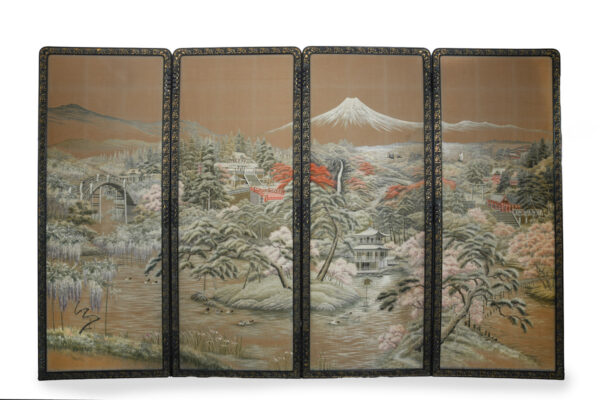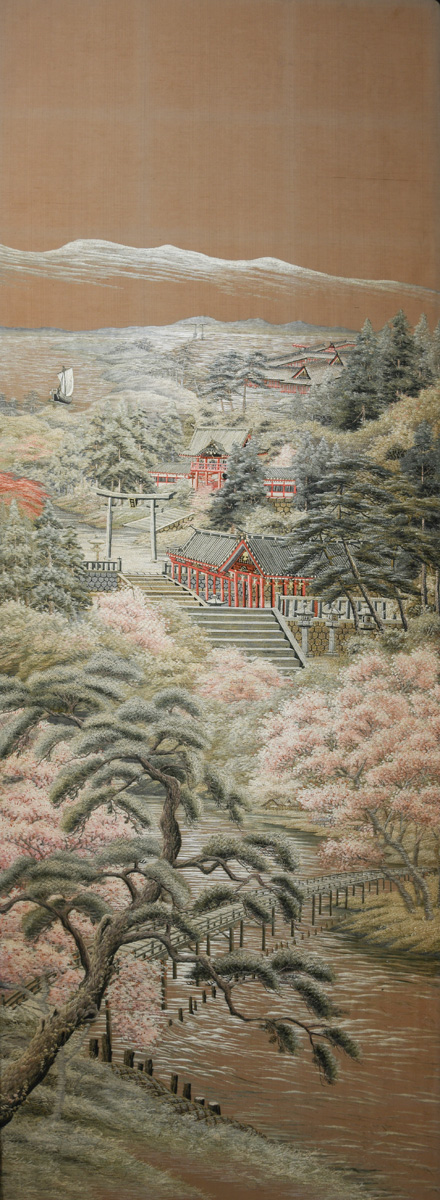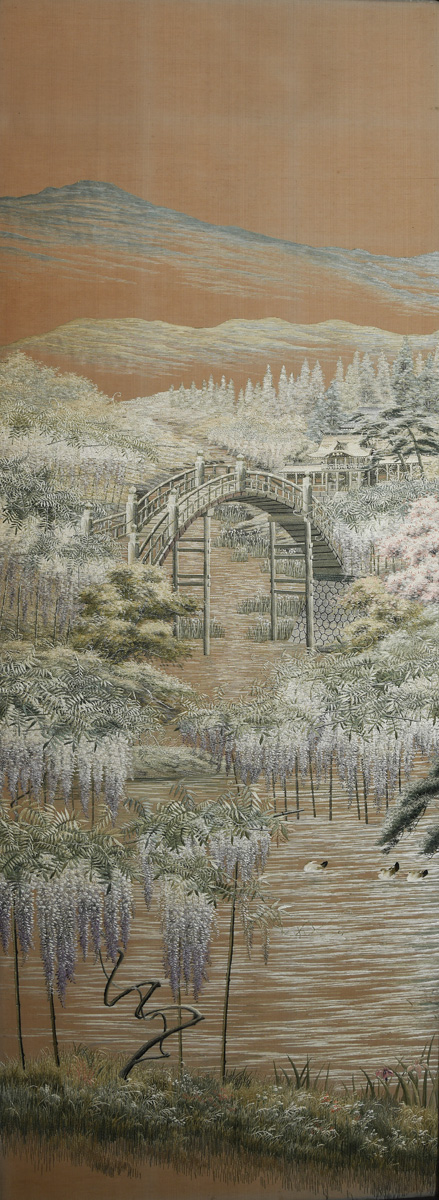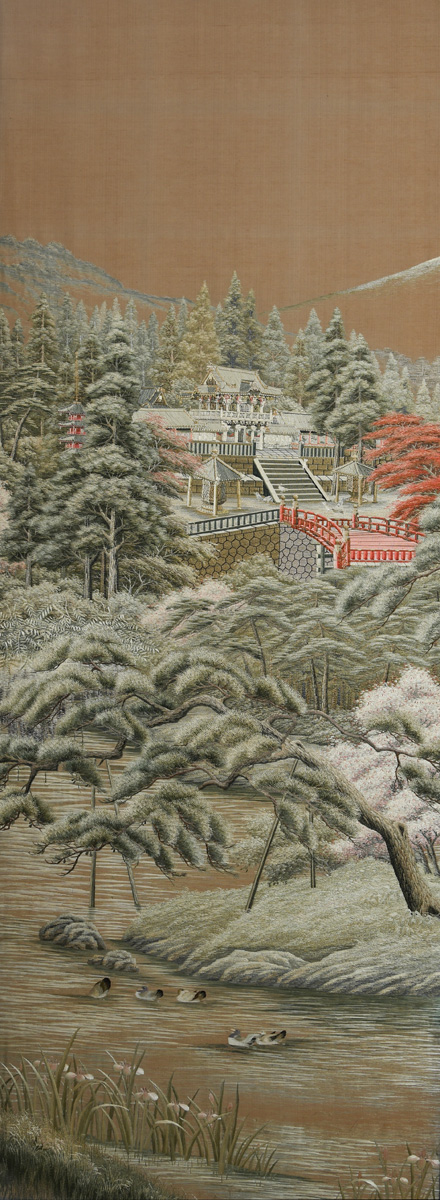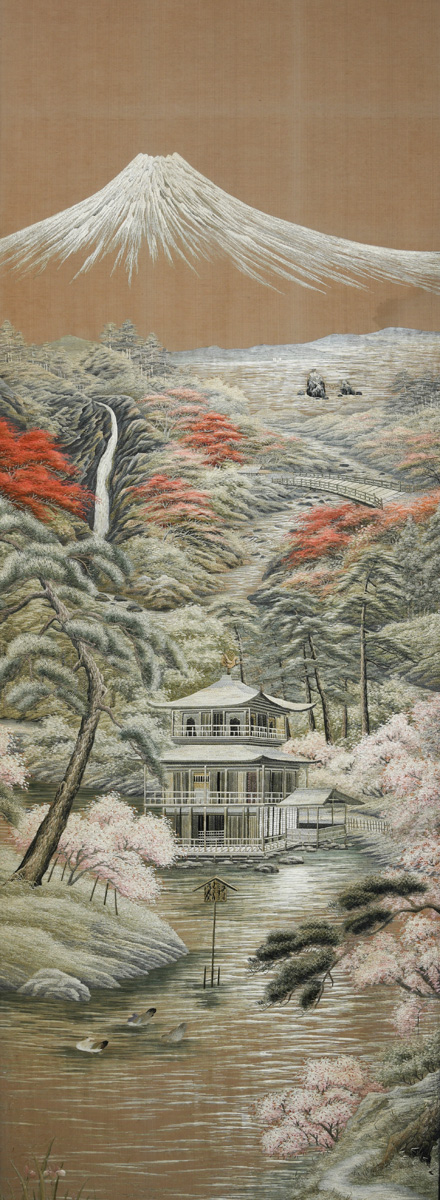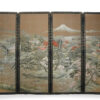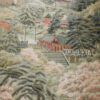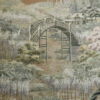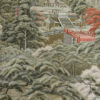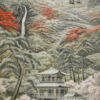As part of our Japanese works of art collection we are delighted to offer this very fine Meiji Period (1868-1912) floor standing fourfold screen, the screen worked in various stitching techniques and coloured silk threads resulting in a continuous landscape scene portraying famous Japanese views, including the Kinkakuji in Kyoto, the gateway at Nikko, the Itsukushima shrine at Miyajima, the bridge at Kameido Shrine, Meotoiwa at Ise, as well as the iconic Mount Fuji rising in the distance. The four panels are housed within their original black lacquer frame, the inset metal borders carved in exquisite blind fret detail with flora and butterflys upon a gilt background for contrast.
Literature:
There is little doubt that a major part of the phenomenon of Japanese works of art exploding onto the worldwide stage during the Meiji period was bought about by the Textile manufacturers of Kyoto, the most recognized of which will undoubtedly be the Nishimura company, founded in Kyoto in 1670 as textile traders, latterly in competition with a company founded in 1831 by Iida Shinshich I (1803-1874), as a small retailer of non-silk drapery products . This modest shop called Takashimaya would through successive generations of the Iida family quickly rise to prominence as a major player in the textile market, becoming Imperial household suppliers and ultimately stiff competition for the long established Nishimura company.
Clearly there was demand for two such important companies in what was at the time and remains today, a red-hot market for arguably the finest textiles ever produced. The best examples are as highly coveted today as they were during this innovative period, though obviously much scarcer, with many of the finest textiles now preserved in the world’s leading museums and collections
The above plotted history can offer only the briefest insight into an industry that simply took the audiences breath away when it launched onto the world stage during the latter part of the 19th century. For a more in depth study of Japanese textiles I would absolutely recommend “Threads of Silk and Gold “a pioneering study that accompanied the first ever textile exhibition held outside of Japan , curated by Clare Pollard at the Ashmolean museum in 2012 .
Provenance:
Eminent Australian Collection.
Previously, featured at plate 21 of the Malcolm Fairley Japanese Works of art Exhibition catalogue , November 2013.
Condition report:
Very fine condition, the textile remains vibrant with very minimal signs of wear or fading.
Approximate Sizes :
Height : 67 1/4″ 171 cm
Width : 103 1/2″ 263 cm
Free fully insured worldwide delivery and a certificate of authenticity are included within the price of this item.
